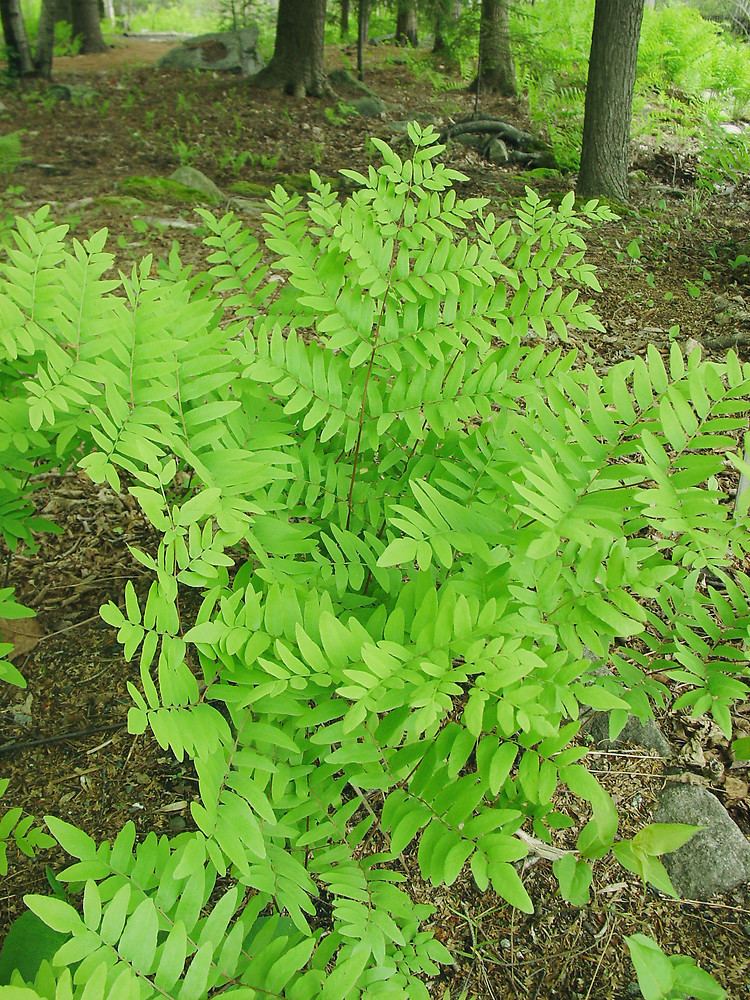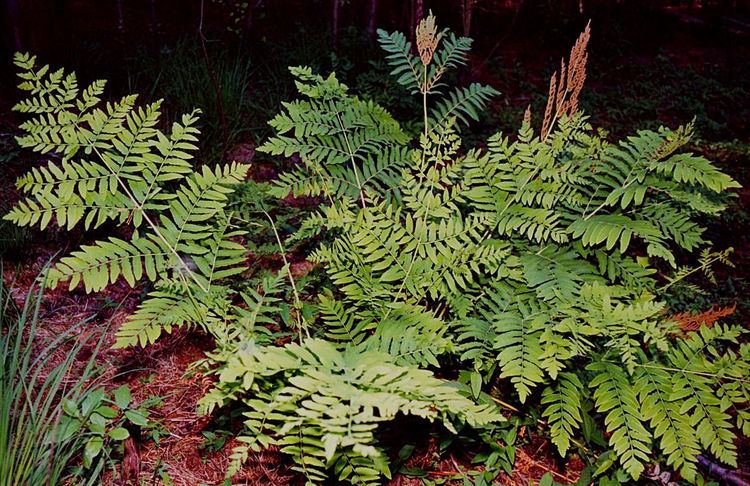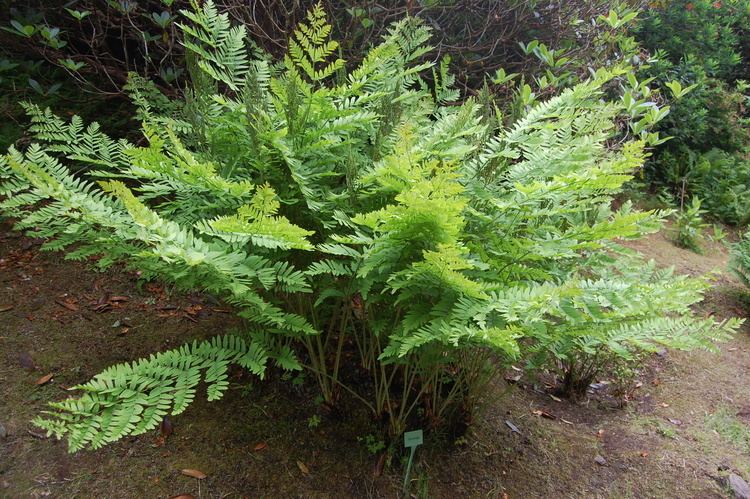Order Osmundales Scientific name Osmunda regalis Rank Species | Division Pteridophyta Section Euosmunda Higher classification Osmunda | |
 | ||
Similar Osmunda, Cinnamon Fern, Onoclea sensibilis, Ostrich Fern, Osmundaceae | ||
Bowdens fern osmunda regalis
Osmunda regalis, or royal fern, is a species of deciduous fern, native to Europe, Africa and Asia, growing in woodland bogs and on the banks of streams. The species is sometimes known as flowering fern due to the appearance of its fertile fronds.
Contents
- Bowdens fern osmunda regalis
- osmunda regalis a species of fern in cantonese flashcard
- Names
- Description
- Evolution
- Varieties
- Similar species
- Cultivation
- Other uses
- References

osmunda regalis a species of fern in cantonese flashcard
Names

The name Osmunda possibly derives from Osmunder, a Saxon name for the god Thor. The name "royal fern" derives from its being one of the largest and most imposing European ferns. The name has been qualified as "old world royal fern" in some American literature to distinguish it from the closely related American royal fern, O. spectabilis. However this terminology is not found in British literature.
Description

Osmunda regalis produces separate fertile and sterile fronds. The sterile fronds are spreading, 60–160 cm (24–63 in) tall and 30–40 cm (12–16 in) broad, bipinnate, with 7-9 pairs of pinnae up to 30 cm (12 in) long, each pinna with 7-13 pairs of pinnules 2.5-6.5 cm long and 1-2 cm broad. The fertile fronds are erect and shorter, 20-50 cm tall, usually with 2-3 pairs of sterile pinnae at the base, and 7-14 pairs of fertile pinnae above bearing the densely clustered sporangia.
In many areas, O. regalis has become rare as a result of wetland drainage for agriculture.
Evolution

Osmunda evolved in the southern continent of Gondwana. A permineralized fossil rhizome of fern was discovered in Early Jurassic (Pliensbachian) lahar deposits at Korsaröd in southern Sweden. Authigenic mineral precipitation from hydrothermal brines occurred so rapidly that it preserved cytoplasm, cytosol granules, nuclei, and even chromosomes in various stages of cell division. Morphological studies showed that the plant closely resembles the cinnamon fern, Osmundastrum cinnamomea. The Korsaröd fern fossil and extant Osmundaceae share the same relative genome sizes and ploidy levels. This suggest that neither ploidization events nor notable amounts of gene loss have occurred in the genome of the royal ferns since the Early Jurassic ~180 million years ago.
Varieties
There are three to four varieties as traditionally construed:

Similar species

There are three very similar species, Osmunda spectabilis, Osmunda lancea and Osmunda japonica. Recent genetic analysis (Metzgar et al., 2008) has shown that the New World varieties are in a clade that is sister to the Old World varieties of Osmunda regalis. If this is true, then O. lancea and O. japonica should either be regarded as varieties of O. regalis, or, conversely, O. regalis var. spectabilis should be regarded as a separate species, Osmunda spectabilis Willdenow. The var. brasiliensis would then be Osmunda spectabilis Willdenow var. brasiliensis Hooker & Greville.
Cultivation
O. regalis is widely cultivated in temperate regions. The species and the cultivar 'Cristata' have both gained the Royal Horticultural Society's Award of Garden Merit. Osmunda plants should be planted in highly acidic, very moist or wet soil.
Other uses
The roots, along with those of other species of Osmunda, are used for the production of osmunda fibre, used as a growing medium for cultivated orchids and other epiphytic plants.
According to Slavic mythology, the sporangia, called "Perun's flowers", have assorted magical powers, such as giving their holders the ability to defeat demons, fulfill wishes, unlock secrets, and understand the language of trees. However, collecting the sporangia is a difficult and frightening process. In earlier traditions, they must be collected on Kupala night; later, after the arrival of Christianity, the date is changed to Easter eve. Either way, the person wanting to collect Perun's flowers must stand within a circle drawn around the plant and withstand the taunting or threats of demons.
Seasoned royal fern is also used in the dish Namul in Korean royal court cuisine.
The young shoots of the fern are, along with the similar shoots of many other fern species, known in some places as fiddleheads, and eaten as food, thought to have an asparagus-like taste.
